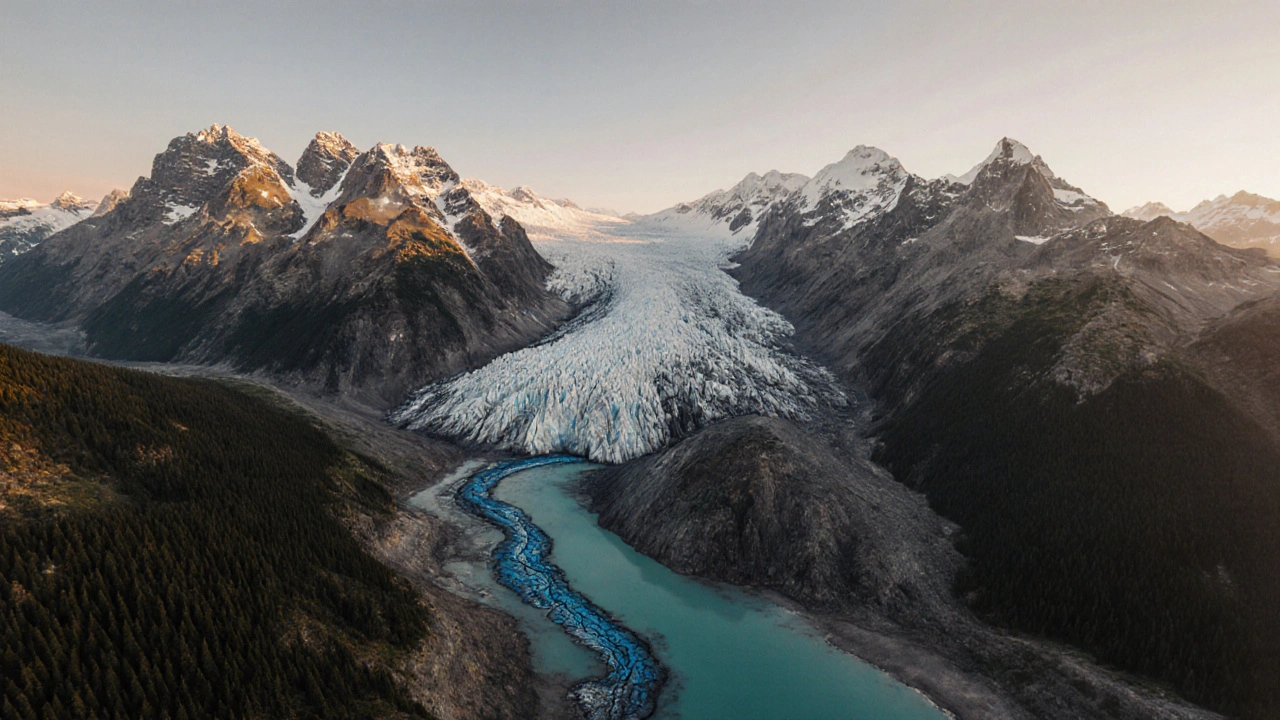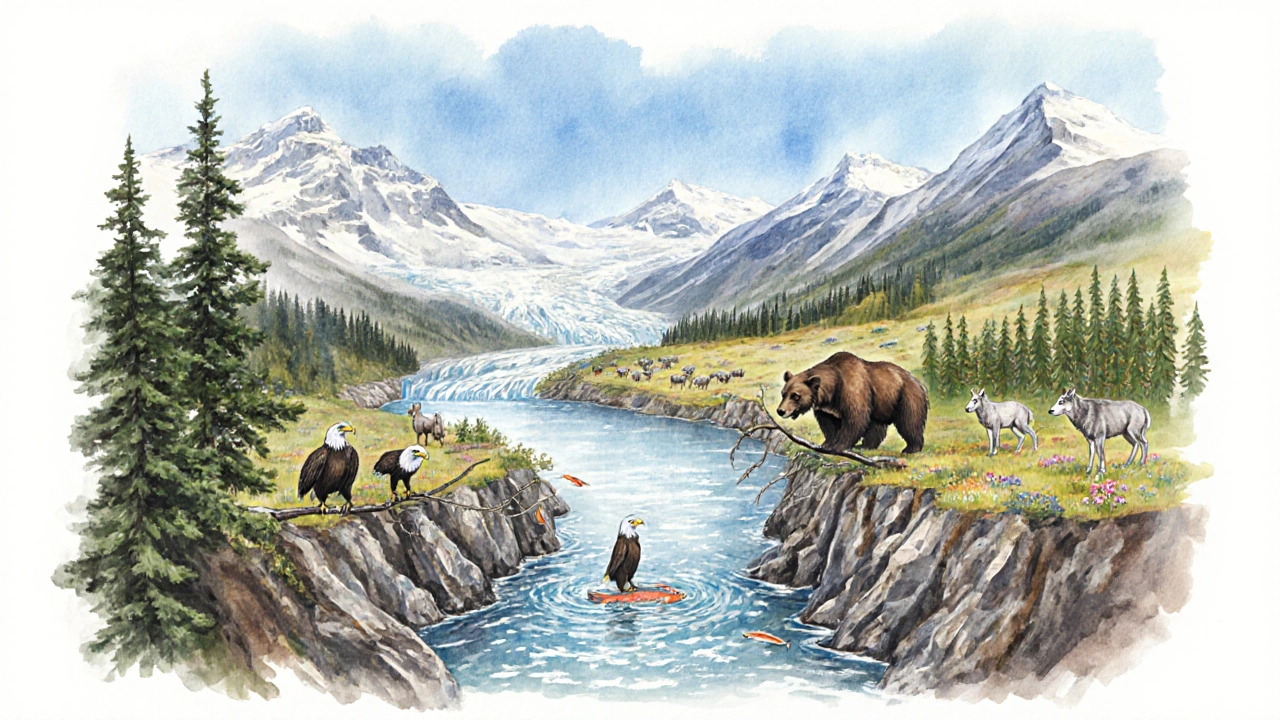Largest US National Park: Size, Location & Facts

Largest US National Parks Comparison Tool
Park Size Explorer
Select a park to see detailed information about its size and features.
Size Visualization
-
-
-
Top 5 Largest US National Parks
| Rank | Park Name | State | Acreage | Size Relative to Wrangell-St. Elias |
|---|---|---|---|---|
| 1 | Wrangell-St. Elias National Park and Preserve | Alaska | 13,175,179 acres | 100% |
| 2 | Gates of the Arctic National Park and Preserve | Alaska | 8,472,506 acres | 64.3% |
| 3 | Denali National Park and Preserve | Alaska | 6,075,547 acres | 46.1% |
| 4 | Katmai National Park and Preserve | Alaska | 4,093,077 acres | 31.1% |
| 5 | Glacier Bay National Park and Preserve | Alaska | 3,283,426 acres | 24.9% |
Note: These parks are located primarily in Alaska due to its vast, sparsely populated landscapes. The lower 48 states have large parks (like Yellowstone at 2.2 million acres), but none approach Alaskan magnitudes.
Size Comparison Visualization
Wrangell-St. Elias (Largest)
13.2 million acres
Yellowstone (Smallest Major Park)
2.2 million acres
Wrangell-St. Elias is approximately 6 times larger than Yellowstone
When you picture a national park that could swallow several states whole, you’re probably thinking of Alaska’s sprawling wilderness. Wrangell-St. Elias National Park and Preserve is a massive protected area in Alaska covering 13.2million acres, making it the largest national park in the United States. Its sheer size - roughly the size of New Hampshire, Vermont, and Massachusetts combined - begs the question: how does a park this big function, and what makes it so special?
TL;DR - Quick Takeaways
- Wrangell‑St. Elias National Park and Preserve is the biggest U.S. national park at 13.2million acres.
- Located in southeastern Alaska, it spans three mountain ranges and over 100 glaciers.
- Managed by the National Park Service, the park supports wildlife, mining history, and remote backcountry recreation.
- Visiting requires self‑sufficiency, a 4‑WD vehicle or aircraft, and careful planning.
- Five other Alaskan parks (Gates of the Arctic, Katmai, Glacier Bay, and Denali) also rank among the top ten largest U.S. parks.
Why Size Matters: The Scale of Wrangell‑St. Elias
At 13,175,179 acres (about 20,600 square miles), Wrangell‑St. Elias dwarfs most U.S. states. Its area surpasses the combined size of the 48 contiguous states’ smallest national parks by a factor of over 300. This massive footprint isn’t just a brag‑right; it shapes the park’s ecology, management, and visitor experience.
The park’s geography includes three major mountain systems - the Wrangell, St. Elias, and Chugach ranges - each boasting peaks over 14,000 feet. Glaciers cover roughly 40% of the landscape, with the colossal Malaspina Glacier stretching 48 miles long. This variety creates distinct climate zones, from coastal rainforest to high‑alpine tundra, supporting everything from brown bears to Dall sheep.
How Wrangell‑St. Elias Earned Its Size
The park’s origins trace back to the 1970s Alaska Native Claims Settlement Act, which set aside large tracts for conservation. In 1980, Congress officially designated the area as a national park and preserve, merging several prior wilderness designations.
Its status as a “preserve” allows limited subsistence hunting and fishing for Alaska Natives - a balancing act between cultural rights and ecosystem protection. The United States government also earmarked funds for a massive road‑building program in the 1960s that never materialized, leaving the park road‑less and truly remote.
Geography & Ecosystems - A Living Lab
Below are the park’s main ecological zones, each with signature species and terrain.
- Coastal Rainforest: Dominated by Sitka spruce, western hemlock, and bald eagles. This zone receives over 200 inches of precipitation annually.
- Glacial Valley: Home to pristine turquoise lakes, such as Kennicott Lake, and fast‑flowing meltwater rivers that support salmon runs.
- High‑Alpine Tundra: Above 6,000ft, vegetation thins to mosses, lichens, and hardy wildflowers. Mountain goats and ptarmigan thrive here.
- Sub‑Arctic Taiga: Siberian larch and dwarf birch dominate, providing habitat for wolves and moose.
These habitats intersect with historic mining districts - notably the Kennecott copper mine, now a UNESCO World Heritage Site. Visitors can walk the ghost town’s wooden walkways and see how early 20th‑century industry coexisted with wilderness.

Visiting Wrangell‑St. Elias: Practical Tips
Because the park is largest national park US, it demands preparation. Here’s a checklist for a safe, rewarding trip.
- Plan Your Access: Most visitors arrive by small aircraft to the McCarthy Airport or by boat to the Port of Cordova. Private float‑planes are common.
- Gear Up: Pack a 4‑WD vehicle or consider a guided dog‑sled tour in winter. Essentials include a satellite phone, bear spray, and a comprehensive first‑aid kit.
- Know the Regulations: Camping is allowed only in designated backcountry sites. Fires are restricted to established fire rings.
- Mind the Weather: Summer thunderstorms can whip up sudden snow at higher elevations. Check forecasts from the National Park Service before heading out.
- Respect Wildlife: Keep a minimum distance of 100ft from bears and 25ft from wolves. Store food in bear‑proof containers.
For those craving luxury, the nearby town of McCarthy offers modest lodges and guided tours. However, the true experience lies in the park’s untouched backcountry, where you might spot a lone brown bear fishing for salmon or hear the distant rumble of a calving glacier.
Comparing the Biggest Parks in the United States
Wrangell‑St. Elias isn’t alone in its gargantuan size. Alaska hosts most of the country’s largest parks. The table below compares the top five by acreage.
| Park | State | Acreage | Year Established |
|---|---|---|---|
| Wrangell-St. Elias National Park and Preserve | Alaska | 13,175,179 acres | 1980 |
| Gates of the Arctic National Park and Preserve | Alaska | 8,472,506 acres | 1980 |
| Denali National Park and Preserve | Alaska | 6,075,547 acres | 1917 |
| Katmai National Park and Preserve | Alaska | 4,093,077 acres | 1918 |
| Glacier Bay National Park and Preserve | Alaska | 3,283,426 acres | 1925 |
Notice a pattern: each of these parks lies in Alaska, a state where land is cheap, remote, and rugged. The lower 48 states have large parks too - like Yellowstone National Park (2.2million acres) and Grand Canyon National Park (1.2million acres) - but none approach Alaskan magnitudes.
Conservation Challenges at a Massive Scale
Managing a park larger than some countries is no small feat. Here are the three biggest hurdles.
- Logistics & Access: With only a handful of roads, patrolling the park requires helicopters, dog‑sled teams, and seasonal staff rotations.
- Climate Change: Glaciers are retreating at unprecedented rates. The Malaspina Glacier has lost over 5% of its volume since the 1970s, altering downstream river ecosystems.
- Resource Extraction Pressure: Although mining is prohibited within park boundaries, surrounding areas see copper and gold exploration. Balancing economic interests with preservation remains a political tightrope.
Community partnerships with Alaska Native corporations have become essential. These groups help monitor wildlife, manage subsistence rights, and provide cultural education to visitors.
Cheat Sheet: Key Facts at a Glance
- Established: 1980 (by Congress)
- Area: 13,175,179 acres (≈20,600sqmi)
- Highest Peak: Mount St. Elias - 18,009ft
- Longest Glacier: Malaspina Glacier - 48mi
- Key Wildlife: Brown bear, Dall sheep, Wolverine, Sea otter (coastal zones)
- Nearest Town: McCarthy, Alaska (population ~300)
Frequently Asked Questions
What makes Wrangell‑St. Elias the largest national park?
Its official boundary covers 13,175,179 acres, more than any other U.S. park. The park combines three massive mountain ranges, over 100 glaciers, and a diverse set of ecosystems, giving it unparalleled physical size.
Can I drive into Wrangell‑St. Elias?
Only a few gravel roads exist, mainly around the town of McCarthy and the historic Kennecott mine. Most of the park is roadless, so visitors rely on 4‑WD vehicles, boats, planes, or hiking to reach remote areas.
Is hunting allowed in the park?
Because the park is a "preserve" as well as a national park, Alaska Natives may hunt and fish for subsistence. All other hunting is prohibited to protect wildlife populations.
What’s the best time of year to visit?
Late June through early September offers the most stable weather, accessible trails, and active wildlife. Early summer provides spectacular meltwater flows, while fall brings vibrant foliage and fewer crowds.
How do I obtain a backcountry permit?
Permits for backcountry camping are free but limited. Apply through the National Park Service website at least two weeks in advance, specifying your intended trail and dates.
Are there any UNESCO World Heritage sites within the park?
Yes - the Kennecott Copper Mines, a historic mining district inside the park, earned World Heritage status in 1987 for its industrial heritage and spectacular setting.
What wildlife should I watch out for?
Expect brown bears near salmon streams, Dall sheep on alpine ridges, wolves in the tundra, and migratory bald eagles along the coast. Always carry bear spray and follow safety guidelines.
How does climate change affect the park?
Glacier retreat reduces freshwater input, alters river temperatures, and reshapes habitats. Long‑term monitoring shows average summer temperatures rising by about 2°F over the past 30 years, pushing some species uphill.